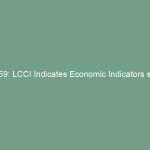5-Step Customer Feedback Framework To Help You Improve Your Business
In today’s competitive business landscape, it is crucial to understand the needs and expectations of your customers. Customer feedback provides valuable insights that can help you improve your products, services, and overall business performance. However, collecting and analyzing customer feedback can be a complex task. To streamline this process, we present a 5-step customer feedback framework that will guide you towards gathering actionable feedback and making informed business decisions.
Step 1: Define your feedback objectives
Before collecting customer feedback, it is essential to clearly define your objectives. What specific aspects of your business do you want to improve? Are you looking to enhance product features, customer service, or overall customer satisfaction? Defining your objectives will help you tailor your feedback collection process and focus on the areas that matter most to your business.
Step 2: Choose the right feedback channels
Selecting the appropriate feedback channels is crucial for reaching your target audience effectively. Consider various options such as online surveys, email surveys, feedback forms on your website, social media polls, or even in-person interviews. Each channel has its advantages and disadvantages, so it’s important to choose the ones that align with your target demographic and business goals.
Step 3: Design effective feedback surveys
To gather meaningful feedback, you need to design surveys that are clear, concise, and easy to complete. Use a mix of closed-ended questions (e.g., multiple-choice or rating scale questions) and open-ended questions to capture both quantitative and qualitative insights. Keep your surveys short to ensure a higher response rate, and consider offering incentives to encourage participation.
Step 4: Analyze and interpret feedback data
Once you have collected a significant amount of feedback, it’s time to analyze and interpret the data. Look for patterns, trends, and common themes in the responses. Categorize feedback into different areas of your business, such as product quality, customer support, or pricing. Use data visualization techniques like charts and graphs to present your findings in a visually appealing manner.
Step 5: Take action and implement improvements
The most critical step in the customer feedback framework is taking action based on the insights you have gathered. Identify the areas that require improvement and develop an action plan to address them. Prioritize the issues based on their impact on customer satisfaction and business goals. Communicate the changes to your customers and ensure they understand that their feedback has been heard and valued.
Conclusion
Implementing a customer feedback framework is a proactive approach to improving your business. By following these five steps, you can collect valuable feedback, gain insights into customer preferences, and make informed decisions to enhance your products, services, and overall customer experience. Remember, customer feedback is a continuous process, and it should be integrated into your business strategy to drive continuous improvement and maintain a competitive edge.
FAQs
Q1: How often should I collect customer feedback?
It is recommended to collect customer feedback on a regular basis. Consider implementing feedback collection methods at different touchpoints throughout the customer journey to gather insights at various stages.
Q2: What if I receive negative feedback?
Negative feedback can provide valuable opportunities for improvement. Embracefeedback as a chance to identify areas for growth and make necessary changes to enhance your business. Take the feedback seriously, address the concerns raised, and communicate the improvements made to your customers.
Q3: Is it necessary to respond to every customer feedback?
While responding to every feedback may not always be feasible, it is essential to acknowledge and respond to significant feedback, especially if it requires action or resolution. Engaging with your customers shows that you value their opinions and are committed to providing excellent customer service.
Q4: How can I encourage customers to provide feedback?
To encourage customers to provide feedback, consider offering incentives such as discounts, exclusive offers, or entry into a contest. Additionally, ensure that the feedback process is user-friendly and convenient, making it easy for customers to share their opinions.
Q5: Can I use customer feedback for marketing purposes?
Yes, customer feedback can be a powerful marketing tool. Positive feedback and testimonials can be used in promotional materials, on your website, or in social media campaigns to showcase the satisfaction of your customers and build trust with potential customers.










